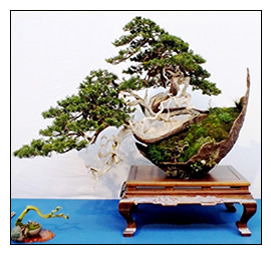BONSAI THROUGH HISTORY
The first mention of bonsai in Japan appears on a Japanese scroll painted during the Kamakura period (1192-1333). The scroll itself depicts life during the Heian period (706-1185) and illustrates miniature trees planted in shallow basins or pots. From the 6th century onwards, Imperial embassy personnel and Buddhist students from Japan visited and returned from mainland China, bringing back souvenirs including container plantings. At least seventeen diplomatic missions were sent from Japan to the Tang court between the years 603 and 839.
The Japanese were fascinated by all things Chinese, and bonsai was one of many Chinese cultural traditions adopted by the Japanese. Bonsai was first adopted by the Japanese during the Kamakura period, but it was during the Edo period (1615-1868) that gardening and small potted trees became most popular. Finding beauty in severe austerity, Zen monks developed their own tray landscapes along more simple lines so that a single tree in a pot could represent the universe. The Japanese pots were generally deeper than those from China.
Everyone from the shoguns to peasant people grew some form of tree or plant in a pot. By the late eighteenth century a group of Japanese students of Chinese art gathered in Osaka to discuss styles of miniature trees. These scholars renamed the trees 'bonsai' (the Japanese pronunciation of the Chinese pun-tsai). Bonsai was now seen as a matter of design, the artistic approach replacing the religious-mythical traditional approach. Variations of sizes and styles were developed; catalogues and books about these trees, tools and pots were published and some early exhibitions were held.
Following the Great Kanto Earthquake that devastated Tokyo in 1923, a group of thirty families of professional growers resettled twenty miles away in Omiya and set up what would become the centre of Japanese bonsai culture - Omiya Bonsai Village. In the 1930s, formal displays of bonsai became recognised, and an official annual exhibition started at Tokyo's Metropolitan Museum of Art, which still exists today as the Kokufu Exhibition. The end of World War II saw the art of bonsai mature and many were cultivated as an important art form. Apprenticeship programmes and great numbers of shows, books, magazines and classes for foreigners evolved outside Japan. The use of power tools matched with an intricate knowledge of plant physiology allowed a few masters to move from the craft approach to a true horticultural art form.



